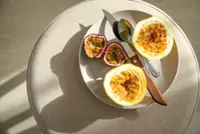Rich in nutrients: The seed and skin of a mango can spur the growth of microalgae.
MALAYSIA is blessed with an abundance of tropical fruits that are not only rich in vitamins, but are also good for the environment.
In a study conducted by Prof Dr Wong Ling Shing (pic) and Khoo Yii Jie from the Faculty of Health and Life Sciences at INTI International University, in collaboration with Assoc Prof Dr Chai Mee Kin and Tan Yeong Hwang from Universiti Tenaga Nasional (Uniten), tropical fruit waste was found to have “exceptional biological properties” that can serve as nutrients for microalgae to minimise environmental pollution.
Already a subscriber? Log in
Save 30% OFF The Star Digital Access
Cancel anytime. Ad-free. Unlimited access with perks.





